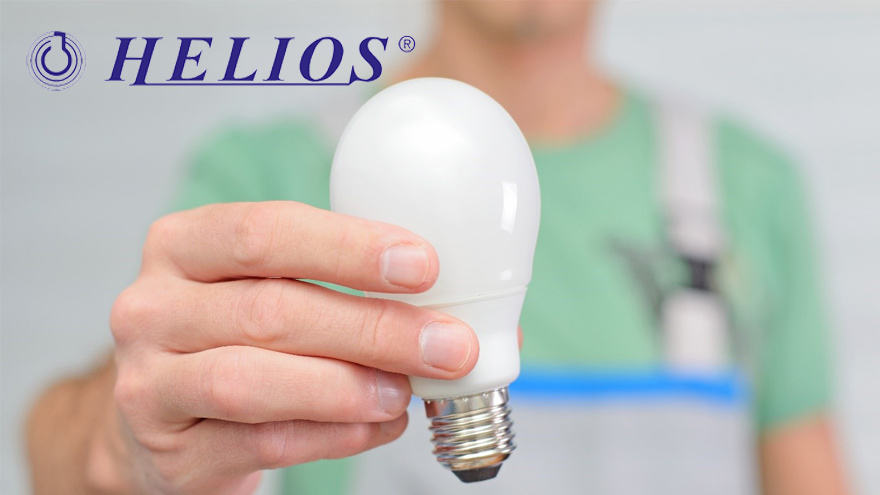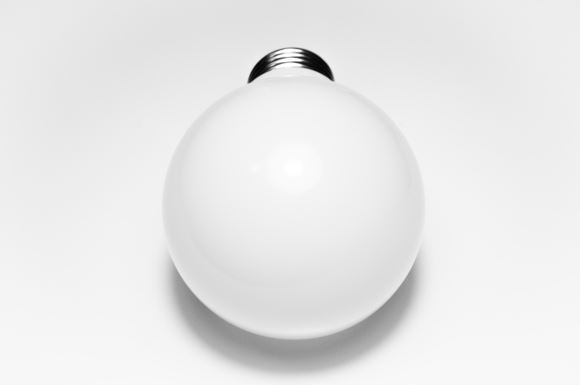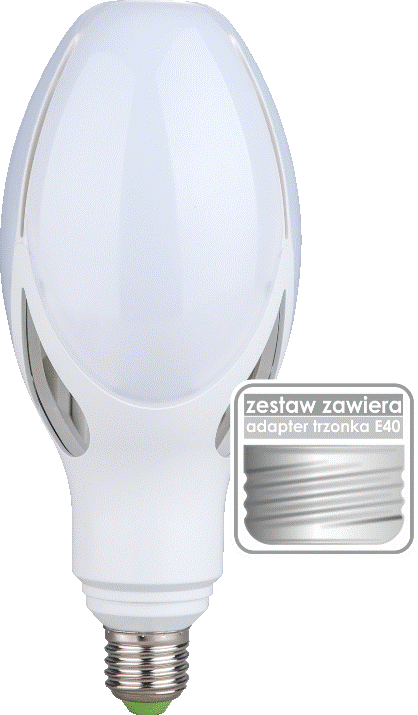Currently, there are so many different types of bulbs available on the market that choosing a light source for a specific lamp can be quite problematic. If you are installing lighting, check out our comprehensive guide on the types of bulbs, their threads and light color. Check which LEDs to choose for specific rooms in the building!

Specification of LED bulbs
LED bulbs are definitely different from traditional tungsten light sources, which were widely used in Polish homes a dozen or so years ago. They were relatively cheap, but had a very short lifespan (up to a thousand hours of illumination), so they had to be replaced frequently. By decision of the European Union, they were withdrawn from use due to high carbon dioxide emissions into the atmosphere.
LEDs have become one of the alternatives to traditional light bulbs. They are characterized by a higher level of energy efficiency, which makes them an ecological and economical solution. They are based on light-emitting diodes. Unlike tungsten models, they do not heat up and are resistant to shocks and intensive use. They also use approximately 80% less energy and can last from 15,000 to even 100,000 hours.
Installers also have at their disposal:
- Halogen bulbs - with a tungsten filament and filled with noble gas and a small amount of halogen. They last only 2-3 thousand hours and consume more energy than LEDs. They can be very small, so they are often used in spot or built-in lighting.
- Compact fluorescent lamps - fluorescent light sources with a lifespan and energy consumption comparable to LEDs. Although they are cheaper, over time they glow less and less, especially at low temperatures. They may also disturb color perception.
As you can see, the most convenient - and at the same time the most cost-effective solution - are LED bulbs . Standard variants may take the form:
- traditional light bulbs - imitating the withdrawn tungsten bulbs, giving a warmer light,
- GU10 reflectors - an alternative to halogen reflectors that does not heat the illuminated objects,
- GU 5.3 headlights - which differ from GU10 in lower voltage (12V instead of 230V).
Exchange benefits in the new OnnTop loyalty platform!
You will also find LED fluorescent lamps on the market, which are available in the following varieties:
- spirals - immediately give strong, constant light; are perfect for illuminating the workplace,
- tubes - have a wide power range and are used in places where the light source is invisible,
- decorative fluorescent lamps - they have small dimensions and are used in places where the light source is deliberately exposed.
Types of bulb threads
Whatever type of bulbs you choose, they may have different threads. These are elements that allow for their installation in a lighting fixture. Although there are special adapters that enable the installation of any light source in the lamp, a more economical solution is to purchase a suitable bulb. What types of threads are usually available on the market?
- E27 bulb - this is the most common type of thread, with a diameter of 27 mm. It is used in virtually all types of bulbs - from LEDs, through halogens and compact fluorescent lamps, to infrared heaters . It is used primarily in residential buildings.
- E14 bulb - has a diameter of 14 mm and is used in lower power installations (e.g. decorative lamps). It is available in LEDs, halogens and fluorescent lamps.
- GU10 bulb - latch-mounted plug with thick forks. It is available in LEDs, halogens and fluorescent lamps intended for headlights.
- MR16 - push-fit plug with narrow forks. Only LEDs and halogen lamps have it, used primarily in suspended ceilings or luminaires built into furniture.
- MR11 bulb - a smaller variant of the above reflector plug. It has very thin forks and is used in additional and decorative lighting.
- G4 - the narrowest plug, used in decorative lighting.
The color of light bulbs
 Most types of bulbs come in a variety of color temperatures. These are values expressed in Kelvin and affect the appearance of the interior and the atmosphere there. The color of light largely determines the well-being and concentration of the users of a given room. Light can be described as:
Most types of bulbs come in a variety of color temperatures. These are values expressed in Kelvin and affect the appearance of the interior and the atmosphere there. The color of light largely determines the well-being and concentration of the users of a given room. Light can be described as:
- Warm - ranges up to 3200 K, has calming and relaxing properties. A room lit in this way looks cozy and promotes relaxation. These types of bulbs are eye-friendly.
- Neutral - falls in the spectrum from 3300 K to 4500 K and imitates daylight. Bulbs of this color are usually installed in living rooms and dining rooms.
- Cold - exceeds the value of 4600K and favors concentration. It is not friendly to the eyes, but it can optically enlarge the illuminated space. Due to their stimulating properties, this type of bulbs are most often used in workplaces.
Every interior needs lights of different colors. It is worth providing users with the opportunity to adapt the lighting to current needs - for example, by installing both functional and decorative lamps in the living room.
Check out the offer of Helios LED bulbs
Which LED bulbs should you choose for specific rooms in the building?
 When installing internal lighting in a building, you must carefully consider the selection of bulbs for each room. While the decision regarding the threads will be dictated by the structure of the lamps, the power or color of the light depends only on preferences. What principles are worth following?
When installing internal lighting in a building, you must carefully consider the selection of bulbs for each room. While the decision regarding the threads will be dictated by the structure of the lamps, the power or color of the light depends only on preferences. What principles are worth following?
- Living room lighting - as we mentioned above, it is worth using different light sources in this type of room. Their combination should allow you to perform everyday duties (strong neutral light) and for a bit of rest (weaker warm light).
- Bedroom lighting - in the night room, you should limit yourself to warm-colored bulbs. Such light does not hurt the eyes and also promotes relaxation. LEDs that are resistant to frequent switching on and off are perfect for night lamps, among others.
- Kitchen lighting - the kitchen requires neutral or even cool light. It ensures comfort of work and promotes the impression of cleanliness.
- Bathroom lighting - for the same reasons, the bathroom needs cool LED light. It will optically enlarge it and give it the impression of sterility.
Choose Helios LED bulbs!
When looking for efficient and reliable light sources for your customers, reach for the Helios brand range. You will find its products in the offer of our online wholesaler. They include not only traditional LED bulbs, but also practical floodlights and infrared heaters intended for the most demanding customers.
Do you have questions about the industry? Join the Świat Instalacji group!